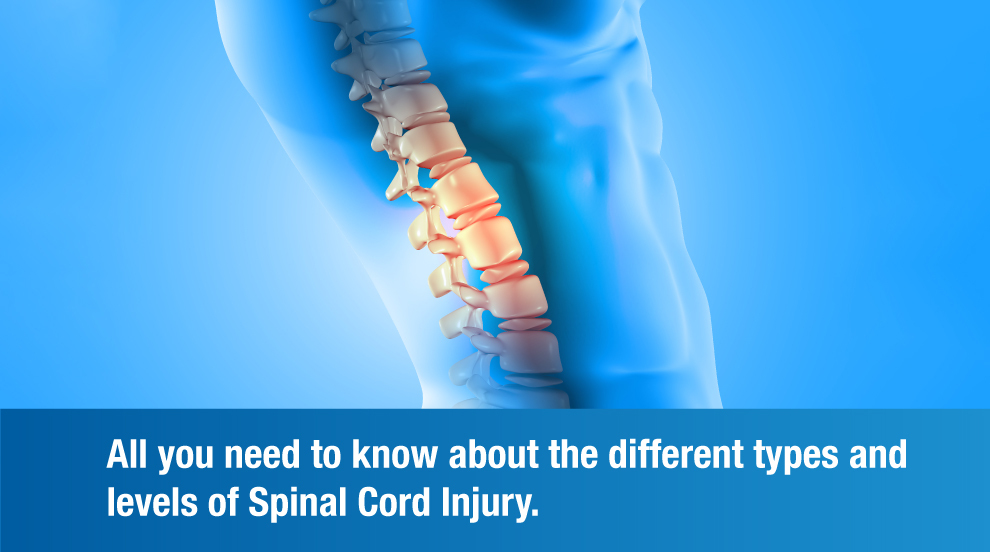
A Spinal Cord Injury is a serious medical condition that often results in permanent loss of function in one or more parts of your body. Hence, it requires immediate care, the right medication, and customized therapy from the best rehabilitation center in Bangalore, so that patients can gain better control over their lives and reduce the risk of chronic medical conditions. Having an understanding of the different types of Spinal Cord Injury and how they affect the body is also useful in this regard.
Understanding Spinal Cord Injury
A Spinal Cord Injury (SCI) is mutilation to the spinal cord that causes reversible or irreversible changes in its function. The damage to the spinal cord can occur in a variety of ways, although the most common cause is due to external trauma. While not nearly as prevalent, non-traumatic injury to the spinal cord is a possibility from causes such as tumors, blood loss, or stenosis. Its symptoms may include loss of muscle function, sensation, or autonomic function in the parts of the body supplied by the spinal cord below the level of the injury.
It is typically diagnosed with the help of a CT scan, MRI, or X-ray. The doctor will check the patient’s motor and sensory functions to assess the degree of damage. If there are any broken bones or tissue damage as a result of the injury, emergency surgery may be needed.
Types and levels of Spinal Cord Injury
There are two ways to classify a Spinal Cord Injury, one is by type and another is by level. There are two types of Spinal Cord Injury:
- Complete Spinal Cord Injury: It results in permanent damage to the affected part of the spinal cord and leads to paraplegia (lower body paralysis) or tetraplegia (paralysis in all limbs).
- Incomplete Spinal Cord Injury: It results in partial damage to the affected part of the spinal cord. The patient’s ability to move and feel depends on how serious the injury is and which part of the spine was affected and the overall outcome is dependent on the patient’s health and medical history. Most Spinal Cord Injuries are incomplete, as medical professionals know how to administer prompt care so that the damage from the initial injury is contained.
By level, one can classify Spinal Cord Injuries based on which of the four sections of the spinal cord was affected. They are:
- Cervical Spinal Cord Injury: It is the most severe type of SCI, as the cervical area is the closest to the brain. A cervical SCI can cause partial or complete loss of functions along with associated medical complications, and may even lead to death. Those who recover may require permanent 24-hour medical care for the rest of their lives.
- Thoracic Spinal Cord Injury: It affects the upper chest, abdominal muscles, and mid-back area. Damage to the thoracic portion of the spine can lead to loss of sensation in the legs and genitals, incontinence, lower back pain, and fever. A thoracic SCI typically leads to paraplegia, with arm and hand functionality unaffected. Once recovered, a patient may learn to move around in a wheelchair or even walk with the help of braces or a standing frame — depending on what their health was like at the time of the injury.
- Lumbar Spinal Cord Injury: It affects the hips and legs. The lumbar portion of the spine carries more weight than any other part. Injuries here lead to varying degrees of loss of function in the lower body but do not affect the upper body. Depending on the patient’s strength, they may learn to walk with a frame or braces. Special equipment may be needed to compensate for the loss of bladder and/or bowel control.
- Sacral Spinal Cord Injury: It affects the upper thighs, hips, buttocks, and genital area. This type of SCI is rare, and usually only occurs as a result of direct injury to the sacral area. Patients will experience some loss of function in the legs and hips as well as little or no bowel/bladder control, but will generally be able to walk.
The long-term treatment goals for a Spinal Cord Injury include rehabilitation and therapy to help the patient regain mobility and strength in parts of the body with nerve damage. A regenerative rehabilitation program consisting of Stem Cell Therapy, Stem Cell Nutritive Therapy, various oral and intravenous medications, along with a holistic rehabilitation program comprising of Physiotherapy, Occupational Therapy, and Speech Therapy at the best rehabilitation center in Bangalore can help a patient in their road to recovery. Having a support system of family, friends, and fellow patients will also provide some relief in these challenging times.










